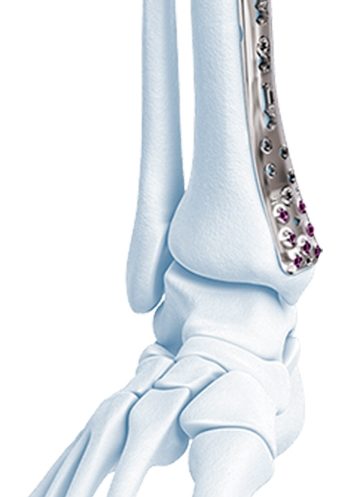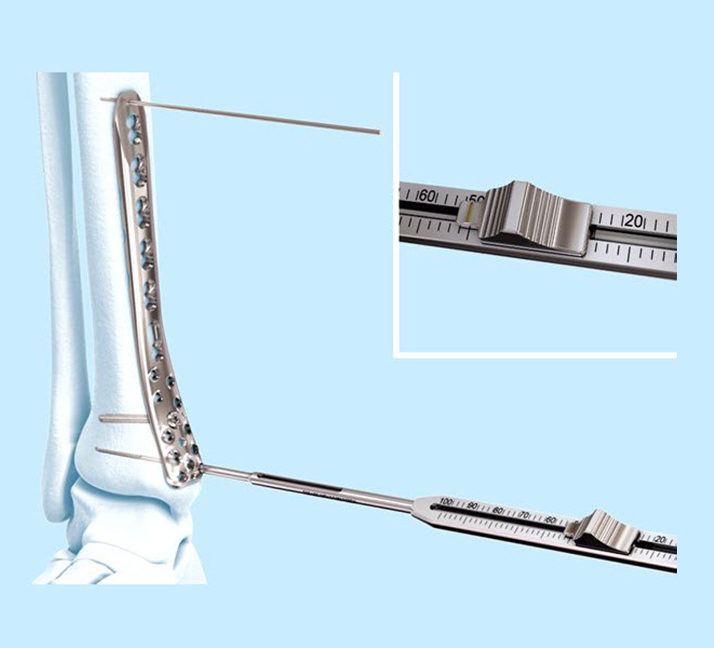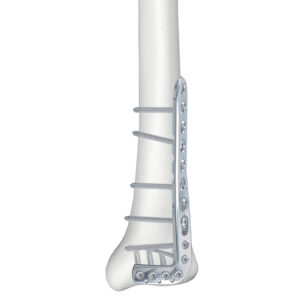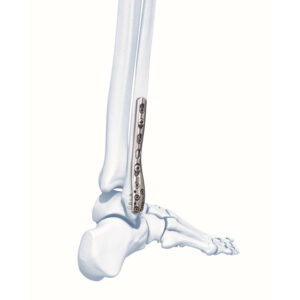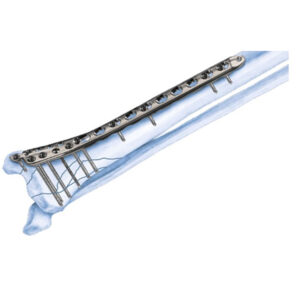The 2.7mm/3.5mm VA LCP® Ankle Trauma system is a comprehensive plating system, consisting of:
- Medial Distal Tibia Plates
- Anteromedial Distal Tibia Plates
- Anterolateral Distal Tibia Plates
- Distal Tibia T- and L-Plates
- Lateral Distal Fibula Plates
The plates are part of the DePuy Synthes Variable Angle Locking Compression (VA LCP) System that merges variable angle locking screw technology with conventional plating techniques. The plates are available in stainless steel and feature an anatomic shape and profile, both distally and along the limited-contact shaft. The Combi holes in the shaft portion of the Variable Angle LCP Plate combine a dynamic compression unit (DCU) hole with a variable angle locking screw hole to provide the flexibility of axial compression and variable angle locking. Distally, the fixed-angle construct is designed to facilitate fixation of small metaphyseal and epiphyseal segments where traditional screw fixation may be limited. The K-wire holes accept wires up to 1.6 mm in diameter to provisionally maintain the reduction of articular fragments and to confirm the location of the plate relative to the distal tibia and fibula.
The plates are periarticular plates that are less thick in the metaphyseal region and not ideal for the treatment of primarily metaphyseal or tibial shaft fractures. These are primarily for the treatment of articular injuries.
Fixation with the system has many similarities to traditional plate fixation methods with several important improvements. Variable angle locking screws provide the ability to create a fixed-angle construct at the desired screw angle while using standard AO plating techniques. Variable angle locking provides the capability for fixed-angle constructs in osteopenic bone in multifragmentary fractures where screw purchase is compromised and in fracture patterns where the screw direction must be altered to allow maximum fragment engagement. Similar to other locking screws, the variable angle screws do not rely on plate-to-bone compression to resist patient load, but function similarly to multiple, small, angled blade plates.
The sets are modular which allows customized selection of implants. This also reduces inventory and overall costs by eliminating seldom-used implants.


